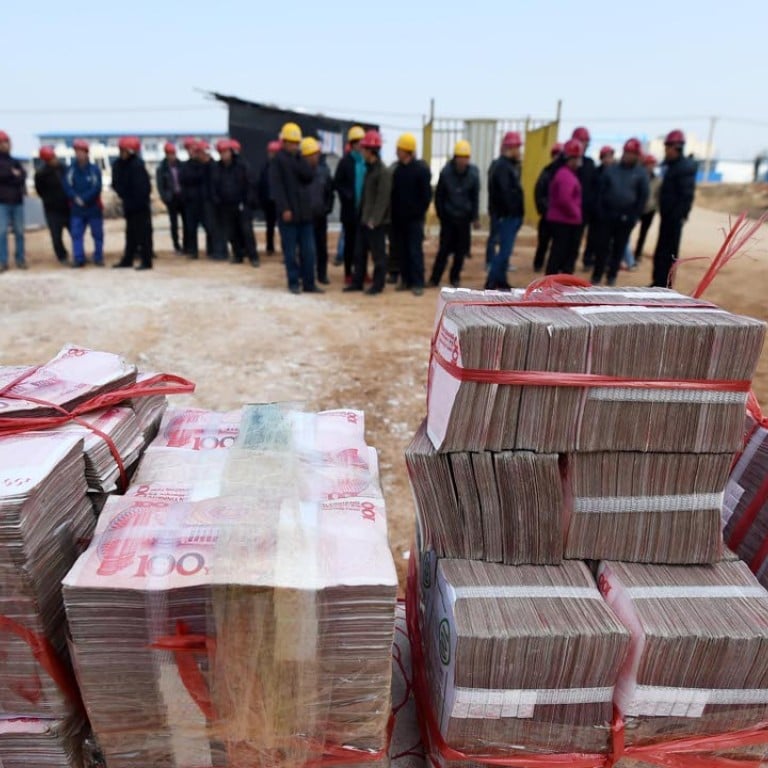
New | China’s wobbly economy weighs negatively for yuan and other Asia currencies
China’s yuan and other currencies set for another year of losses, analysts say
The yuan and other currencies linked to the China story are expected to depreciate further this year, amid a backdrop of soft global demand that promises to put additional brakes on the already cooling mainland economy.
The yuan traded in Hong Kong lost 5.3 per cent of its value in 2015, ending the year at 6.5727 to the US dollar, while yuan traded in Shanghai shed 4.5 per cent of its value to end the year at 6.4936 per US dollar, its lowest level in four and a half years.
The People’s Bank of China devalued the yuan by 2 per cent on August 11, a move along with a pattern of weaker daily fixings, that point to what analysts believe is Beijing’s unofficial strategy to engineer a weaker currency to help boost exports and revive the economy.
Stephen Innes, senior trader at OANDA Asia Pacific, expects the yuan to shed 3.5 per cent to 4.5 per cent of its value this year.
The China economy is not healthy, despite considerable easing of credit conditions
“The China economy is not healthy, despite considerable easing of credit conditions. The world’s second largest economy will continue to provide a challenge for global investors as China painful shift from the ‘old economy’ will continue to weigh on investor sentiment,” Innes said.
“We should expect the PBOC’s monetary easing to continue well into 2016. The market forecasters are anticipating two 25-basis point rate cuts and up to five 50 basis point reserve ratio requirement (RRR) cuts in 2016,” Innes added.
Both the interest rate cuts and the RRR reduction will weigh negatively on the yuan. Innes believes the policy would also be negative for other regional currencies like the Singapore Dollar this year.
Anther regional currency to be hurt by the Chinese economic slowdown would be the Australian dollar, he said.
“If you consider that the Australian dollar is primarily driven by commodity prices and that potentially, the Chinese economy could be set for a hard landing, the Australian dollar could face considerable headwinds,” Innes said.
“Also, if we see more aggressive pricing in of the Federal Reserve Interest rate hike slope in early 2016, the Australian dollar will struggle mightily.”
Mark Tinker, head of AXA Framlington Asia, said the yuan is likely to become a favourite of currency traders once it is added to the International Monetary Fund’s club of Special Drawing Rights (SDR) in October. The yuan will join the US dollar, pound, euro and yen among currencies enjoying the IMF’s reserve status.
“Currency volatility can drive asset allocation. We have seen the disruption to emerging market currencies and wonder where the foreign exchange traders might go next. The yuan is the favourite at the moment,” Tinker said.”
Heng Koon How, senior foreign-exchange strategist at Credit Suisse, however said the inclusion to the
IMF reserve basket also means the PBOC would need to let the yuan to trade more in line with market forces.
Heng thus downgraded his outlook on the yuan to 6.80 per dollar in 12 months from 6.60 previously. He also revised his three-month target for the yuan to 6.55 per dollar.
“The weakness in the yuan in December suggests the PBOC had stepped away from active intervention. This is within traders’ expectations as they believe China would need to let the yuan trade more according to market forces after the IMF’s move,” he said.
“A lighter intervention touch from the PBOC is a step in the right direction towards the goal of a free floating onshore yuan with more two-way flexible trading,” Heng said.“However, it would also imply the existing negative market forces will take over and drive the yuan weaker.”
HSBC also expects the yuan will weaken further this year, forecasting 6.70 per dollar by the end of 2016.
“Regarding our framework, we incorporate HSBC’s view that the euro and Japanese yen will strengthen against the US dollar, as well as the cyclical headwinds for the currency stemming from China’s economic slowdown,” HSBC said in a research note.
Brett McGonegal, chief executive of Reorient Group, said China’s overhaul of its foreign exchange system, which includes the introduction of a tradeweighted exchange-rate index, announced last month, paves the way for Beijing to guide the yuan lower.
The new index will track the yuan against a basket of currencies, including the US dollar, which will have a 26.4 per cent weighting.
McGonegal believes the new index is part of China’s plan to depreciated the yuan, noting that when introduced in mid-December the basket showed that the yuan had appreciated 2.93 per cent since the start of the year.
He said one conclusion is that the in spite of its recent drop, the yuan still appears to be overvalued when compared with other currencies.
“The rate raise coupled with the new yuan basket approach is very positive for China in the sense it allows the PBOC to decouple from the US dollar and make room for monetary easing. This is the most important theme in China right now and the market is missing it,” McGonegal said.
Bruno Lee Kam-wing, a senior wealth manager at Manulife described the new index is “very sensible”.
“It is a change that can be justified by the much higher weight of China in the world economy and international trading system than was the case when the crawling peg was first introduced,” he said.

